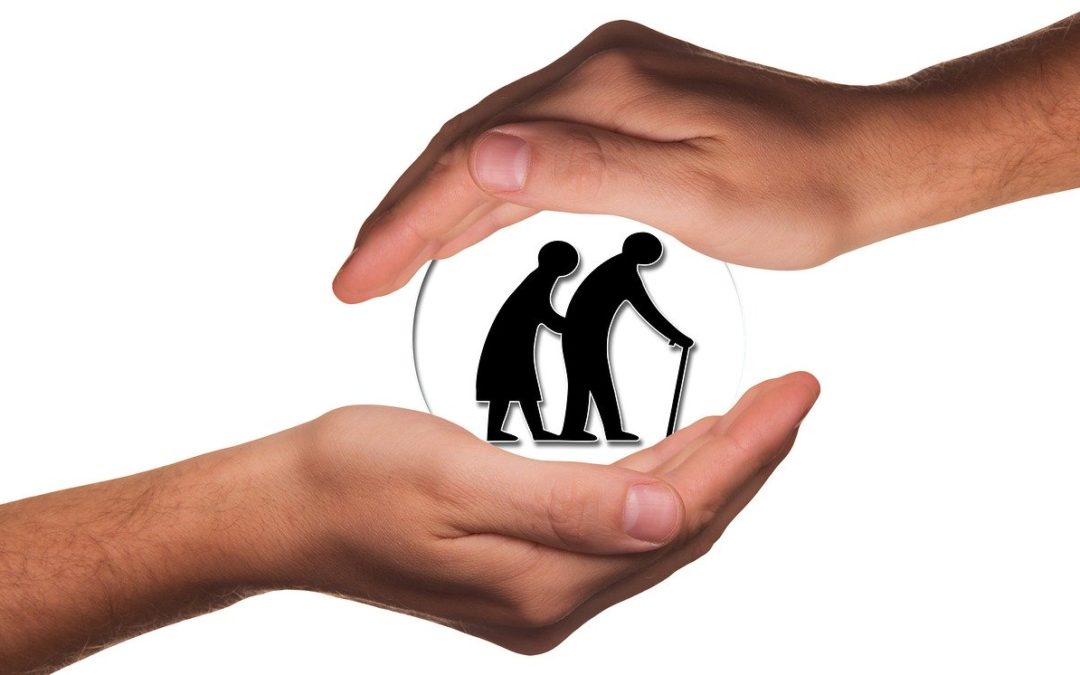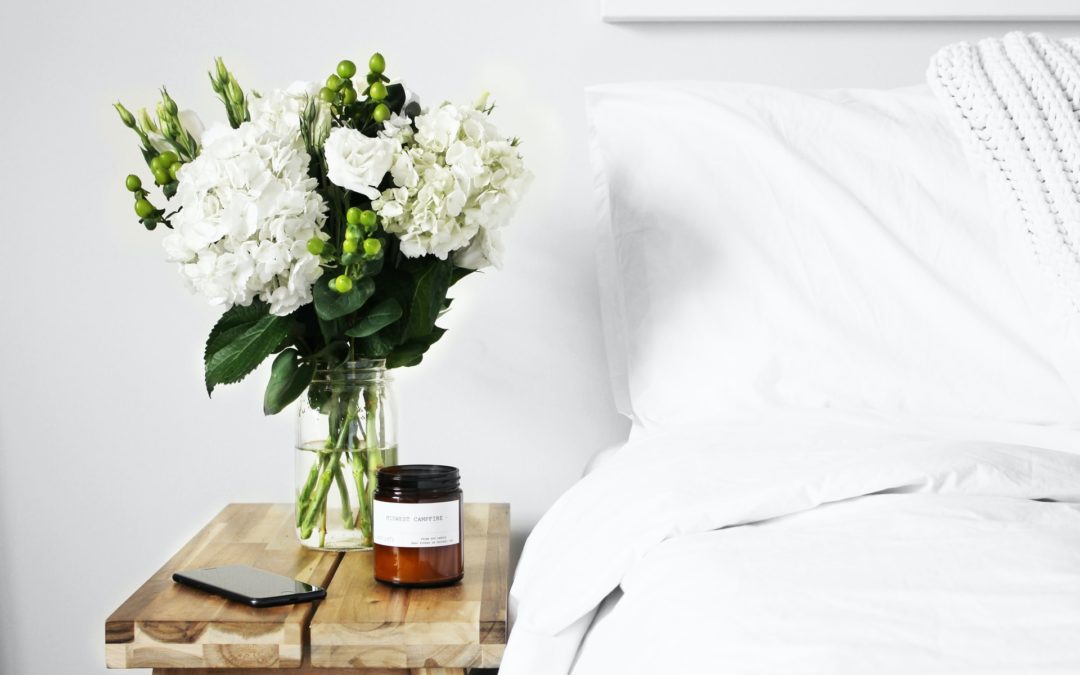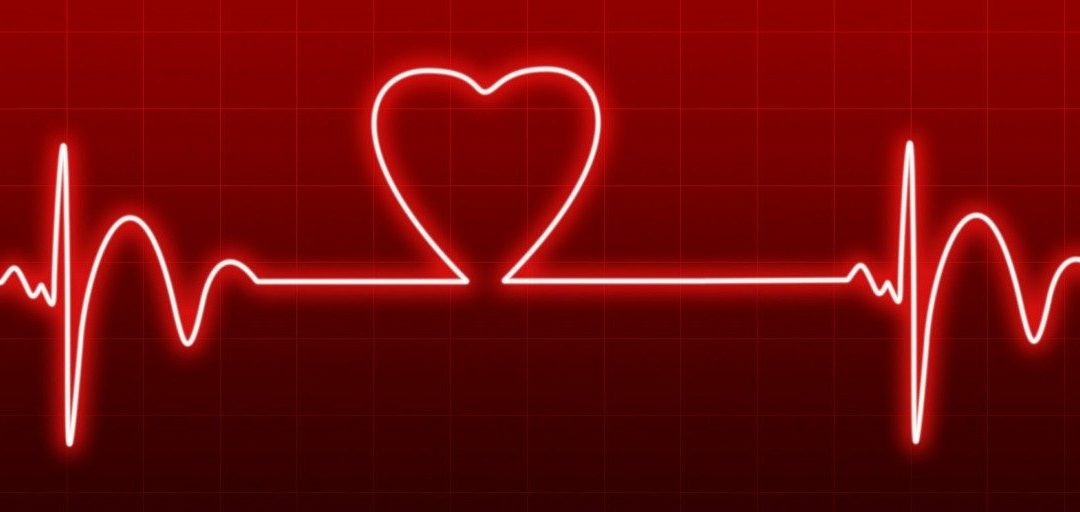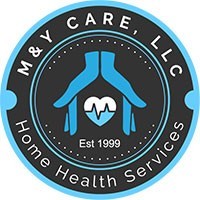
by M | May 9, 2020 | News |
In-home care agencies have continued their work throughout the COVID-19 pandemic, keeping disabled and elderly people out of nursing homes.
Confer Home Health Service, at 327 S Howard St., South Williamsport, primarily serves individuals in Lycoming and Clinton counties with grocery shopping, personal care and anything to maintain their home, said Lorraine Conger, owner.
“They all need assistance in order to stay in their homes, so we’ve been working the entire time,” she said.
As a state-mandated service, the health service never had any doubts of closing.
Workers at the agency help some of their patients with every aspect of their day, like helping get out of bed, cleaning themselves, meal preparation, and going to bed.
“There would be no way some of these people could remain in their home,” she said.
To keep COVID-19 from entering their patients’ homes, workers have been wearing masks, gloves, as well as limiting their interactions at laundromats, pharmacies, grocery stores and others.
“Some of my people have been concerned because they have small children at home and families, but everybody has had the thoughtfulness that they have to continue to do the service they provide for others,” said Confer.
This includes entering some facilities which have been placed on quarantine due to a suspected COVID-19 infection.
“I’ve been trying to get some bonuses, and additional compensation set up. Obviously my employees have been extremely helpful with some of the places we go into,” she said.
While the state has sent Confer several surveys with various questions regarding her agency’s needs, but each time there are no new supplies to be sent her way, she said.
“You ask if they can get them and their responses are: ‘We’ve been told to ask, but not how to get them,’” she said.
But Confer said she has had a “guardian angel,” in Nancy Pawlak, of Williamsport, did hear their need and made more than 200 masks for Confer Home Health Service.
“She has been a godsend to us,” she said.
The new policies and personal protective equipment used by the agency will continue through May 8 and longer as the situation warrants it, she said.
By Derek Danneker | May 6, 2020
Source: Williamsport Sun-Gazette

by M | May 8, 2020 | News |
Securing direct reimbursement for telehealth visits and a Medicare rate increase are among the top advocacy priorities for home health providers during the coronavirus outbreak. While they share some common goals, home-based care providers that predominantly work under Medicaid have priority lists of their own.
David Totaro is the chief government affairs officer for Moorestown, New Jersey-based Bayada Home Health Care, one of the largest home health providers in the country. In addition to his job at Bayada, Totaro serves as chairman of the Partnership for Medicaid Home-Based Care (PMHC), a Washington, D.C.-based alliance of Medicaid home care providers, managed care companies, technology firms and other stakeholders.
Currently, the major to-dos in the Medicaid space include establishing an emergency fund for supporting direct care workers and securing presumptive eligibility for home- and community-based services.
Home Health Care News recently connected with Totaro to discuss these and other topics. Highlights from that interview are below, edited for length and clarity.
In addition to his roles at Bayada and PMHC, Totaro also serves as a board member of the Partnership for Quality Home Healthcare (PQHH), the Home Care Association of America (HCAOA) and the Pennsylvania Homecare Association (PHA). He also is a member of the National Association for Home Care & Hospice’s (NAHC) public policy committee.
HHCN: How have your advocacy priorities shifted since the start of 2020?
Totaro: If you look back to just a couple of months ago, I think anybody in almost any industry would say their priorities have changed dramatically. In our case, we’ve gone from “we need higher reimbursement” to “let’s get the equipment we need.” At Bayada, we were specifically asked to put on hold any of our 2020 priorities in our government affairs advocacy program and concentrate totally on helping secure personal protective equipment (PPE).
That’s saying something. There were so many big 2020 regulatory priorities, including the Patient-Driven Groupings Model (PDGM). But some of those to-dos are now on pause because the industry desperately needs PPE?
That’s exactly correct. And this is not a short-term problem. Even when the pandemic subsides, I think PPE is going to be an increasingly greater part of our cost model, at least over the next several years. That’s something the home health industry has not had to worry about for a long time.
In Illinois, where I am, there’s a policy where you need to wear a face mask or covering in public. As people start to go back to work, companies might adopt similar measures internally. Will that further stress the PPE supply?
We’re competing with everybody now for the same thing. We haven’t hit the peak in demand for our services yet. A lot of the COVID-19 folks are still in hospitals, but we’re preparing for them or caring for a few here and there. The increased cost [of PPE] is about $2 an hour. Providers operate on low margins in the first place, particularly on the home care side.
You’re saying the “increased cost” of PPE is $2 an hour?
On average, the amount of money we’re spending to secure PPE is costing us about $2 an hour more than previously.
Wow. But you’re looking at a lot more than PPE at PMHC. Apart from supplies, what have been some of the pain points for providers that deliver care in the home?
We’re in what I would call the “Twilight Zone” right now. We’re preparing for the probability of taking care of more clients and patients than we’ve ever had in the history of home-based care. At the same time, many of our existing clients and patients are declining care. They’re refusing care from even long-term caregivers who they do not want in their homes. It’s this unusual up and down. On one hand, we’re seeing declining revenues. On the other hand, we’re spending more than we’ve ever spent in order to prepare for and survive this pandemic. At Bayada, in one week in March, we spent as much on PPE as we did in the entirety of 2019.
We’re in this very difficult stretch of trying to sustain our long-term business while preparing for what we expect to be a very, very strong period [for volume] toward the end of May, early June and July.
You’re the chairman of the Medicaid Partnership for Home-Based Care. What unique challenges have Medicaid providers struggled with?
Well, we’re not really prioritized yet. Home care isn’t really prioritized yet. Most of the resources and attention is going toward hospitals — and I think we can all understand why. But this is going to change rapidly. We’re concerned that we’re not going to be fully prepared for what the next couple months may bring.
There’s also a significant lack of coordination. We’re sometimes not quite sure where the PPE is and where it’s coming from, how it’s being distributed. Even those who are involved in the distribution process, when you speak to them directly, they’re confused as well and can’t tell you what they’re expecting. We’re in a PPE maze.
Why don’t you think in-home care providers are prioritized when it comes to PPE? Is it a lack of awareness? Is it because the hospitals need PPE more?
I think it’s the latter. Although, I have heard stories about the general lack of awareness. I’m also on the board of The Partnership for Quality Home Healthcare (PQHH). One of our members was in a meeting at the White House prior to a press conference early on. When they were talking about what home care is and what we can do, there was a lack of knowledge in the room. There was a clear lack of awareness of what home care is all about. So I do believe that’s part of the issue. But I just think that there’s a limited supply right now. And it needs to go to hospitals. We were just not prepared as a nation for this pandemic.
What else can Congress do to support, in particular, Medicaid home-based care providers? For example, in a letter PMHC sent to Congressional leaders, you called for the creation of a dedicated fund for direct care workers.
We’re faced with various challenges. We have workers who are declining to go into their patients’ homes because they’re either fearful of contracting the virus and bringing it home, or because they have children at home. Schools have been canceled through most of the school year. On top of that, there’s also the opportunity for many of them to collect unemployment under recently implemented policies that are almost better or similar to working.
A direct care workers fund — the idea we’ve proposed — would actually reward and incentivize the direct care workers who do work during the coronavirus. We’ve proposed that those who work through the pandemic get 1.5 times their average rate during this period of time. We’ve proposed that those who are actually caring for COVID-19 patients get a 2-times better rate. We’re also proposing that they be covered for emergency sick leave as well.
Incentivizing workers to keep working is critical. In one case I’m aware of, one of our member agencies saw a 400% increase in unemployment claims in a week.
Is that doable — a dedicated fund to help providers better support direct care workers?
It’s already happening in some places, to an extent. There are some states that have enacted increases for home- and community-based service workers. Massachusetts has increased their rates by 10% through the pandemic. In North Carolina, we got a 5% rate increase for Medicaid. Arkansas has also increased their rates. In New York, Gov. Andrew Cuomo said he believes that there should be hazard pay for all front-line health workers, which include home- and community-based care workers.
Another solution PMHC has suggested is a post-discharge care kit that follows the patient. When a COVID-19 patient goes to the hospital and is discharged to home-based care, A PPE kit follows them back into the home. Could you talk a little bit about how that might help?
Well, it’s not an idea that we’ve gotten great traction on yet because of the limited supply of PPE and the needs hospitals have. However, we’ve initiated — and, in this case, I’m talking about Bayada — conversations with the New Jersey Hospital Association. Yesterday, I spoke directly with the Maryland Hospital Association. We’re trying to get our hospital associations to not only embrace this concept, but to work with us in helping source supply. The last thing they want is to send a patient home — and then there’s no equipment or limited equipment to be able to care for that patient during the recovery process. If that happens, they possibly end up back in the hospital, where there’s limited capacity.
We’ve gotten a good response. They think it’s an interesting idea that they’d like to continue to discuss. We’ve been asking for a one-day supply, up to a week’s supply, just to make sure that home-based care clients and patients are covered.
That seems like a good lesson for other providers: If you’re struggling with PPE, maybe try your hospital partners and see how they can help.
I’ve also noticed that you have to ask in almost every situation you’re in. It’s essential to make sure that others are aware of the new needs that you have.
Home care providers traditionally have not had their caregivers go into a home with gowns, gloves, masks or goggles. I was invited to be on a call in New Jersey about two weeks ago with the Senate president, who was hosting industry leaders within the state. There was one individual representing a variety of industries. I represented home care. There was someone from transportation, the restaurant industry, hospitals, etc. I mentioned the fact that our No. 1 priority was securing PPE and I went into reasons.
Well, on that call was the head of UPS for the state of New Jersey. He called me immediately afterward and said he was getting 60,000 masks that day. He said he was giving us 2,000 masks. It’s amazing to me how everybody wants to help. They all know that there’s a dire situation, but they don’t know where it is sometimes. You just have to let them know.
What else is important to touch on?
I do want to mention one other thing. Also included in the proposal that PMHC submitted to Congress was the call for “presumptive eligibility.” That’s something we have been seeking for years — getting Medicaid home-based care presumed eligible immediately from discharge at the hospitals. Right now, it’s only if you go into a nursing home that you are presumed eligible for Medicaid immediately. However, for home care, you have to go through a process. We’re asking that, during this pandemic, we presume all COVID-19 patients immediately eligible for Medicaid home-based care. I think we’re hopeful that [policymakers] are going to do that, because no one wants to send a patient who is recovering from the coronavirus to a nursing home at this stage.
Right now, without that, you either have to go to a nursing home for care, or you go home without care and you wait for approval.
What long-term impacts do you think home-based care providers are going to see from the coronavirus?
This is putting pressure on every agency to shine. This is our opportunity to show what we can do. Those who can deliver quality care at the least expensive costs will succeed. I don’t see reimbursement increasing over the short term, because state budgets have been drained. So providers who can both deliver quality care and lower costs are really going to stand out.
Do you think home-base care providers might see a shift toward delivering more acute care on a regular basis in the future?
Yes. One of the premises we have always had is that people prefer to be cared for at home. I think that’s going to be increasingly true. And I think that our health care workers — whether they’re physicians, nurses or others — are going to want to see their patients being cared for primarily at home. I think that provides us with a significant opportunity, both in the short term and definitely in the long term.
Besides PPE, are there any other challenges from a supplies or equipment perspective?
I was on a call recently about PPE. We talked about something that no one is discussing. In New Jersey, we have an urgent need now for oxygen. This has never been raised in any of our other states.
By Robert Holly | May 5, 2020
Source: Home Health Care News

by M | May 7, 2020 | News |
In a matter of weeks, a tsunami of coronavirus cases has completely upended life as we know it. Across the country, health care providers are working overtime to save lives, while millions more Americans stay at home to reduce the rate of transmission and take the strain off our overwhelmed emergency departments.
One of the biggest problems we have today is that the rules were not written to respond to a pandemic of unprecedented proportions. Regulatory impediments to the use of home care professionals and telehealth technologies are hurting people. At a time when the government would like to encourage elderly people to stay home and get treated so as not to be exposed to coronavirus, they are maintaining policies encouraging the opposite.
No one understands the importance of social distancing better than older Americans who are most at risk. According to a new report published in The Lancet, people diagnosed with coronavirus over the age of 60 are 20 times more likely to die than those under the age of 60. Meanwhile, the Centers for Disease Control and Prevention (CDC) estimates that a full three-quarters of patients hospitalized with the novel coronavirus are over age 50, with higher rates corresponding with older age. And, because older Americans often suffer from underlying conditions that make them more susceptible to coronavirus such as chronic lung disease, cardiovascular disease, and diabetes, they face even higher risks than their less vulnerable counterparts.
Keeping seniors in the safety of their homes is paramount during this pandemic. That’s why, as America works to “flatten the curve,” expanding access to health care in the home setting has become more important than ever. At a time when hospitals and health systems are scrambling to meet skyrocketing demand, the Medicare home health and home respiratory sectors, for example, are already trained and skilled at treating people in the comfort and safety of their own homes, allowing seniors to remain self-isolated and out of hospitals and other acute-care settings. These sectors collectively employ millions of Americans in communities across the country who are uniquely qualified to care for immunocompromised patients. They represent a “standing army” of health care providers ready to serve seniors with coronavirus or chronic illnesses.
Unfortunately, despite the clear benefits, home health and home respiratory care professionals are bumping into regulatory barriers that prevent them from expanding access to care for millions of Medicare beneficiaries.
For home health care, the Centers for Medicare & Medicaid Services (CMS) has not yet issued guidance enabling home health agencies to provide telehealth services – including remote patient monitoring – to reach their existing patients as well as new coronavirus cases. As doctors increasingly turn to telehealth to safely treat patients at a distance and reduce the burden on hospitals, it is critical that CMS issue immediate guidance so that home health providers can quickly pivot to this swelling patient population.
Moreover, Medicare is still implementing a new payment program that reduces home health reimbursement by more than $1 billion in 2020 alone. Needless to say, with coronavirus cases surging, deep reimbursement cuts are completely out of line with reality and will severely hamper the ability of the home health sector to care for Medicare patients. Instead, this sector needs financial relief.
When it comes to home respiratory care, suppliers of non-invasive ventilators, oxygen, and positive airway pressure machines, CMS has made enormous progress in allowing providers to reach acute patients battling coronavirus by removing burdensome requirements that threatened to slow down the delivery of care.
In addition, Medicare recently took steps to improve access to non-invasive ventilators. While these advances are welcome and will save lives, more remains to be done to ensure vulnerable seniors have the treatment they need. Moving forward, Medicare should quickly pause the inclusion of critical respiratory equipment (including nebulizers, oxygen and BiPAPs,) from the competitive bidding program so suppliers are not undermined when meeting the surging demand for home respiratory care.
And while Congress took positive steps in helping all Medicare providers by including financial relief in the recent CARES Act, more must be done to enable struggling health care providers to remain operational during this crisis in order to protect the health and interests of vulnerable seniors.
Our nations highly skilled workforce of homecare professionals is uniquely qualified to keep seniors out of overwhelmed hospitals by treating them in the home. Now, more than ever, we need the financial support and regulatory relief necessary to quickly deploy our resources to serve even more seniors during this national health emergency.
By Brian Darling | May 4, 2020
Source: Issues & Insights

by M | May 4, 2020 | News |
The shift toward “aging in place” has been fueled by a range of health monitoring technologies – fall-detection pendants, emergency alert systems, fingertip blood pressure monitors, ECG patches and so on. But the senior population has needs and preferences unique from the general population, creating a home health monitoring challenge that can’t simply be solved by sending them home with clinical-grade monitors or even consumer-friendly wearables.
“There are a lot of problems with these,” Fan Ye, an associate professor at the College of Engineering & Applied Sciences at Stony Brook University, said during a recent HIMSS20 online seminar. “Traditionally, equipment [is] bulky, expensive and hard to deploy and wear at home. Wearables, people have to remember to charge them every day and put them on. This can be challenging for cognitively challenged older adults.”
With this in mind, Ye – along with Elinor Schoenfeld, a research professor at Stony Brook University School of Medicine, and colleagues – set out to develop a non-wearable home health-monitoring system for seniors. To do so, the group conducted a handful of group-discussion sessions with 57 community-dwelling older adults from New York City (n = 24) and suburban Long Island (n = 33).
Of these, 79% lived with their spouse, 83% used smartphones, 86% had WiFi access in their home and 60% had used video conferencing technologies at their home. Their ages ranged from 60 years to 90 years.
While their comfort with hypothetical in-home sensors generally varied, the respondents most often said they were comfortable with as many sensors as would be needed to allow them to continue living in their homes. What’s more, the cohort became increasingly accepting of the sensors in scenarios where their home or health conditions might change, such as if they were recovering from a recent illness or if they found themselves living alone. And as for the data being collected, roughly 90% said they would be comfortable sharing it with a provider and 81% with family.
But these responses don’t mean that the seniors didn’t have some misgivings regarding their privacy.
“All participants were less comfortable using visual means of data collection. They raised concerns that security and privacy, loss of independence from monitoring, the ethics of data collection and sharing, … and they were worried about themselves, family members and providers being overwhelmed by the vast amounts of data that can be collected from sensors,” Schoenfeld said during the HIMSS20 digital presentation. “These discussions informed requirements to develop a sensor system that’s flexible enough to accommodate individuals in different life phases, with different levels of comfort, different home environments, amounts of expendable incomes and available support systems.”
The seniors’ feedback helped Ye and his team as they developed their own passive monitoring system comprising a depth-sensor camera and an ultra-wide-band (UWB) radio. The first component, much like Microsoft’s Kinect, detects multiple bodies in the room, estimates distance and recognizes limb positions – without being able to recognize certain identifying information such as the subject’s face. Meanwhile, the UWB radio bounces short pulses off of surfaces well enough to detect minor changes such as respiration, heart beat or muscle tremors.
While he said that there’s still room for the “preliminary” tech to improve over the next few years, Ye and his team found the approach to collect vitals data offered an accuracy similar to other monitors. He said that the team is working with several labs to bring the system into the real world, and highlighted a promising test among 21 patients alongside the university’s Division of Pulmonology and Critical Care Exercise Lab.
When paired with an artificial intelligence system for analysis and automatic intervention, Ye said that the approach would check all of the major boxes for an ideal home senior-health-monitoring system: it requires little input from the senior, collects data 24/7 in real time, preserves privacy and knows to act only when a senior’s behavior deviates from the norm.
“This is not for clinical purposes, or to replace clinical equipment, but rather provide a low-cost and portable system for home-based monitoring,” he said. “And the value proposition for this technology, for the patients and families, is to know you’re in good hands. Especially if you live alone, any changes in their health or home status … may not able to be [detected] immediately. But the technology would be able to detect and notify.”
By Dave Muoio | April 29, 2020
Source: MobiHealthNews

by M | May 2, 2020 | News |
Home health nursing is a niche for nurses who have experience and enjoy being on the move and working independent from the hospital. Visiting nurses, now termed home health nurses, date back to the 1800’s. Lillian Wald founded the Visiting Nurse Service of New York in the late 1800’s and the current structure of home health care is based off that model.
Home health nursing consists of providing nursing care in an individual’s home. The nurse must possess ingenuity as the conveniences and equipment found in the hospital are generally not available. Nurses carry their own supplies and regularly utilize the nursing process and honed assessment skills.
There are many varied clinical responsibilities the home care nurse has. Some of these are reconciling medications, managing foley catheters, providing drain care, and teaching the patient. Serving as a case manager is another responsibility. This means caring for the patient from beginning of service to discharge back into the community or prior baseline. This includes coordinating with doctors, family members, and other members of the health care team. Building rapport and familiarity with a patient is more important than ever with the current COVID-19 epidemic.
The COVID-19 epidemic poses one of the biggest challenges across the entire health care arena including home care. Due to this epidemic, changes have been made to the delivery of home health care. These include utilization of telehealth, increased incidence of homebound patients, changes to PPE usage, and temporary waivers and allowances of Medicare requirements. Changes are evolving frequently and this information is current at the time of this post.
Due to COVID-19, nurses may provide telephone or telehealth assessments in addition to in-home visits if the patient’s condition is stable. These “visits” are allowed if the patient’s doctor permits. A combination of telephone/telehealth and in-person visits lessens the number of exposures the nurse has with the patient. A phone call or telehealth assessment involves asking questions in order to determine the patient’s status and identify any new or worsening health issues. If the patient has current technology telehealth video visits can be conducted that allow for the nurse to see the patient on the computer screen.
In order to qualify for home care a patient must be deemed homebound. This may be determined from a doctor’s order or due to the patient’s health condition. A patient can be admitted into home health if he or she is homebound. Due to recent temporary Medicare changes if a patient is suspected COVID positive or confirmed COVID positive, he or she can be considered homebound. These measures reinforce the stay at home theme to help in lessening COVID spread.
Changes to PPE usage are the same as the requirements in the hospital. If a patient is COVID positive, Airborne and Contact Precautions are taken. This means the home health nurse would wear a N95 mask, face shield, goggles, gloves, gown, and perform proper donning. Upon exiting the patient’s home, the nurse would doff and leave the used PPE outside the home according to his or her agency policies.
Current guidelines from the CDC and NAHC (National Association for Home Care and Hospice) require all home care staff to wear masks when in contact with any patient. If the patient is COVID positive, then a N95 mask must be worn. Patients who are COVID positive must stay separated from others in the home preferably in a room with a closing door to assist in quarantining. It is also recommended that all patients — regardless of COVID status — wear a cloth mask during each visit.
Home health nurses are providing increased education to patients and their families focusing on infection prevention in the home. Handouts from reliable sources such as the CDC are being provided to family members. Nurses are also providing education on proper hand washing technique and disinfection guidelines for laundry, surfaces and other areas of the home.
As noted earlier, COVID-19 has impacted all areas of health care and home health is no exception. By providing increased education to staff, patients, and families; the goal is to decrease the intensity and mortality rate of this pandemic. Nurses are on the front lines and need to stay abreast of frequent changes to Medicare rules. It’s also necessary to take current measures to protect themselves and their patients during this challenging time in history.
By Susan K. Sinclair, MSN, RN-BC | Apr 30, 2020
Source: Daily Nurse





